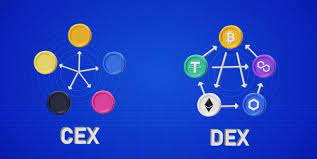“Let’s get this closer to what we want.” The plan almost never turns out perfect when it meets reality. Further, as conditions in the real world change, we need to update and advance the software to match. Troubleshooting and optimizing your code is easy with integrated errors, logs and code level performance insights. This article will explain how SDLC works, dive deeper in each of the phases, and provide you with examples to get a better understanding of each phase.
SDLC is a framework defining tasks performed at each step in the software development process. At this stage, the goal is to deploy the software to the production environment so users can start using the product. However, many organizations choose to move the product through different deployment environments such as a testing or staging environment.
Also, make sure you have proper guidelines in place about the code style and practices. In other words, the team should determine the feasibility of the project and how they can implement the project successfully with the lowest risk in mind. ” This stage of the SDLC means getting input from all stakeholders, including customers, salespeople, industry experts, and programmers. Learn the strengths and weaknesses of the current system with improvement as the goal. These companies may dedicate teams of individuals to managing the software lifecycle in a way that supports the client company based on discovery and participation. The code is tested to make sure it is free of bugs, adheres to the client requirements and correctly interfaces with other software products together with the underlying hardware.
It’s critical to test an application before making it available to users. Much of the testing can beautomated, like security testing.Other testing can only be done in a specific environment – consider creating a simulated production environment for complex deployments. Different parts of the application should also be tested to work seamlessly together—performance test, to reduce any hangs or lags in processing. The testing phase helps reduce the number of bugs and glitches that users encounter.
Extra: Software Maintenance
This is the software architecture stage and includes both logical and physical design. The difference between planning in Scrum and waterfall is how much work you plan and when. Scrum planning happens all through the development of the product, from the beginning to the end. With the adoption of faster and newer development life cycles, organizations are moving away from older SDLC models .
In many cases, both teams are working at this point since the development team can begin setting up systems for further development and coordinating resources. System analysis is, essentially, a feasibility study to see if your idea is viable. The goal is to explore the idea for your software from the lens of a business executive trying to avoid a bad investment. You’ll have to build out the rest of the idea and find ways to justify its development. Much of the work in this step will outline the design and development stages later.
- In the spiral development model, the development process is driven by the unique risk patterns of a project.
- By taking these steps, teams can ensure that the development lifecycle will satisfy the needs for each aspect of the development cycle.
- Thesemetrics or KPI’s can be used to improveparts of the cycle that aren’t running efficiently.
- Maintenance is performed over time to change the system architecture according to future needs.
- If you need help with Atlassian’s Jira tool, we’ve got some great apps for you to try.
- All stakeholders then review this plan and offer feedback and suggestions.
Medium-size companies began seeing the benefit of adopting an agile practice, and eventually enterprise organizations followed suit. Remember to refer back to the Agile Manifesto and The 12 Principles Behind the Agile Manifesto if you get stuck. These values and principles don’t apply only to what you’re building but also to how your team works. The key concept behind agile frameworks is to inspect and adapt — including both the software and how you’re functioning as a team. Since software is always evolving, this process repeats until the product has either matured to a maintenance level or has reached the end of its useful life and is retired.
Software is tested for portability and adaptability and integration related issues are solved during implementation. The conceptual model that results from OOA will typically consist of a set of use cases, one or more UML class diagrams, and a number of interaction diagrams. Developers create a version very quickly and for relatively little cost, then test and improve it through rapid and successive versions. One big disadvantage here is that it can eat up resources fast if left unchecked. With this methodology, we finish one phase and then start the next.
Why Is The Sdlc Important? What Are The Advantages Of Implementing The Sdlc?
The entire process of software development isn’t as simple as its definition, it’s a complicated process. Accordingly, it requires an efficient approach from the developer in the form of the Software Development Life Cycle . At every stage, test plans and test cases are created to verify and validate the product according to the requirement of that stage. For example, in requirement gathering stage the test team prepares all the test cases in correspondence to the requirements.
Over time, the concept of structured programming brought in the need for developmental models and the SDLC was born. Models shifted from traditional staged SDLC processes, to agile, and then to Devops. Coding tasks are allocated as delegated by the scope of work created during steps 1 & 2 in a process called “task allocation”. This subdivision of labor ensures all programmers know what areas of code they are responsible for, so are able to maximize efficiency.
Companies mustreduce costs, deliver software faster, and meet or exceed their customers’ needs. SDLC helps achieve these goals by identifying inefficiencies and higher costs and fixing them to run smoothly. The maintenance stage is the final—and continuous—stage of iterating and building upon your software solution as it operates and progresses in a production environment. This could include bug fixes, upgrading security protocols, updating features and specifications, among many others.
Why Agile is not good?
Agile practices have enabled software development teams to create more relevant software much more quickly than have past practices. But agile processes are not a panacea for all that is wrong with software development. … Agile can also put pressure on individuals and teams to deliver.
Some companies, like Twitter and Facebook, release new software every two days. No doubt there are companies releasing software even more frequently. At the end of the analysis stage, teams are able to identify a realistic, reachable timeline they can march to. A big difference with Kanban is that instead of committing to work based on story points and team velocity, each column in the Kanban board can only hold a limited number of work items .
What Is Sdlc?
Try out Stackify’s Retrace tool for free and experience how it can help your organization at producing higher-quality software. The most flexible of the SDLC models, the spiral model is similar to the iterative model in its emphasis on repetition. The spiral model goes through the planning, design, build and test phases over and over, with gradual improvements at each pass. Application performance monitoring tools can be used in a development, QA, and production environment. This keeps everyone using the same toolset across the entire development lifecycle.
Plus, it makes the software highly responsive to customer feedback. Agile seeks to release software cycles quickly, to respond to a changing market. It can also lead to a project going off-track by relying too heavily on customer feedback. Documentation can be a formal process, including wiring a user guide for the application. It can also be informal, like comments in the source code that explain why a developer used a certain procedure. Even companies that strive to create software that’s easy and intuitive benefit from the documentation.
For each iteration, the team plans, develops, reviews, and deploys updates to the product functionality. As stakeholders perform acceptance testing and see the working product, they may ask for new priorities or requirements. That feedback is added to the product backlog to be prioritized with other features and work by the product owner. The testing team evaluates the developed product in order to assess whether they meet the requirements specified in the ‘planning’ phase.
This input is synthesized into a detailed definition of the requirements for creating the desired software. The team also determines what resources are required to satisfy the project requirements, and then infers the associated cost. With modern application security testing tools, it is easy to integrate security throughout the SDLC. Next step is to bring down whole knowledge of requirements and analysis on the desk and design the software product.




